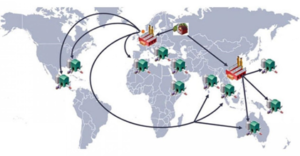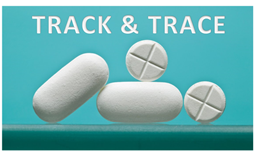 Supply chain security happens to be quite a broad subject, encompassing both the internals of supply chain management (e.g., having the security of multiple suppliers to manage manufacturing risk) as well as external considerations (counterfeit drugs with inferior or altered safety or efficacy profiles impacting health and safety).
Supply chain security happens to be quite a broad subject, encompassing both the internals of supply chain management (e.g., having the security of multiple suppliers to manage manufacturing risk) as well as external considerations (counterfeit drugs with inferior or altered safety or efficacy profiles impacting health and safety).
Securing the Supply Chain
Pharma supply chains are complex.
And when you introduce dishonest criminal elements into an already complicated arrangement where human health and lives are at stake, they become even more challenging.
The challenges – present and emerging – facing drug supply chain security continue to grow more convoluted. This has become a hot topic in the industry for a number of reasons – ranging from patient safety and impacts on the bottom line to the increased regulatory attention focusing on what amounts to a still-growing global problem.
Supply Chain Management for Product Continuity
Internal or manufacturing-related supply chain issues are certainly very real. This year’s biggest drug shortage story so far has been EpiPen. From Five stories that speak volumes about US generics market at in-pharmatechnologist.com:
“The issue at the heart of the case is the problem resides in having one manufacturer responsible for a single product that is critically important to a number of people worldwide.” In the case of EpiPen, Pfizer had difficulties manufacturing on behalf of their partner Mylan, with no secondary supplier available to pick up the slack.”
There are a number of cases in which Neuland serves as either a primary or secondary manufacturer, and we’ve even gone so far as to make sure we can manufacture a given product in multiple suites, and at different physical locations, to help ensure product continuity.
Drug Supply Chains and Patient Safety
Externally, supply chain security impacts consumers in the form of counterfeit medicines. The number of incidents is on the rise, and enforcement agencies are struggling to keep up.
From pharmaceuticalcommerce.com:
“With the US and EU about to implement the next stage of their ‘track and trace’ legislation to combat illegal drugs in the pharmaceutical supply chain…every company must prepare to ensure compliance.
…With annual sales of over $1 trillion, prescription drugs lead the list of products counterfeited. The effects of these drugs can be devastating. It’s estimated that one million patients die each year through toxic or ineffective counterfeit product and that there are as many as 450,000 preventable malaria deaths annually from counterfeit pills.”
Across the Pharma Supply Chain: Complete Drug Traceability
Track and trace technologies are expected to eventually extend all the way up and down the supply c
hain, in time landing (at the molecular level) in APIs.
Another recent in-pharmatechnologist.com article (Looking to the future of a safe supply chain) predicted a rising tide for API tracking:

“We also foresee track & trace expanding its reach upstream and downstream, accommodating the tracking of the complete pharma process from an active pharmaceutical ingredient (API)/molecular level through to the actual consumption of the product…”
This topic was also referenced in a recent PharmTech article (Anticounterfeiting: In Search of the Unhackable), which discussed new innovations such as DNA tagging systems in which a strand of DNA is attached to a product which “would allow users to identify product information, manufacturing data, and chain-of-custody information on that product, and would cost less than a penny per item.”
API Tracking is Already a Reality.
In fact, such tagging has already been done. In a series of case studies demonstrating Molecular Recognition Markers for solid dosage drugs, proprietary trace markers (already approved for use by FDA CDER) were incorporated into an active pharmaceutical ingredient to allow for easy authentication.
At present, there are a number of ways to physically insert markers into solid dosage drugs. The most common – in tablet film coatings or inks – are increasingly being used for certain high-profile or high-risk drugs. But other techniques, including incorporation at parts-per-billion levels into the API itself, are becoming viable and offer the ability to implement track-and-trace capabilities earlier in the supply chain.
The Endless Loop of Anti-Counterfeiting
These are scary times, indeed. It’s a truism that technological developments (in this case, track & trace technologies) tends to play catch-up with counterfeiting or illegal practices. We’ve seen it with currencies, automotive parts, technology, software and much more. If you can imagine a product, someone has likely already figured out how to wholesale copy, forge or imitate it.
As protective measures come to market (and eventually become mandated) in the pharma industry, increasingly sophisticated counterfeiting will ultimately demand a new generation of changes to drug manufacturing processes in the future.
But there is some good news to keep in mind: we have technology and very determined scientists on our side in the fight to keep drugs safe and effective.










